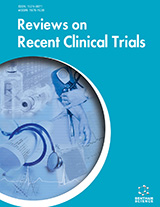Abstract
Between 20–25% of all breast cancers are diagnosed in patients younger than 50 years of age, most of whom are still premenopausal. Currently, tamoxifen is considered the standard of care for adjuvant treatment in these cases. However, in postmenopausal women, aromatase inhibitors (AIs) are a better choice. Given the superiority of AIs over tamoxifen in postmenopausal women, multiple investigators explored the potential role of AIs in premenopausal patients receiving ovarian suppression. Until very recently, available data derived from the ABCSG-12 clinical trial argued against the combination of AIs and ovarian suppression. This idea, however, may have changed with the release of the combined analysis of two clinical trials: SOFT and TEXT which evaluated the use of ovarian suppression in combination therapy. Clinicians will soon reconsider the possibility of using this strategy for premenopausal patients. Given the availability of this new data this review will analyze the consequences derived from this study, contextualize this new information within the vast available literature of anti-hormonal therapy, and discuss potential arguments in favor of and against the use of this approach.
Keywords: Breast Cancer, SOFT, TEXT, tamoxifen, exemestane, triptorelin.
Graphical Abstract
Reviews on Recent Clinical Trials
Title:Anti-Hormonal Therapies for Premenopausal Patients – What did we Learn from the TEXT/SOFT Trials?
Volume: 10 Issue: 2
Author(s): Matias E. Valsecchi, Gonzalo Recondo, Maximo de la Vega, Martin Greco, Gonzalo Recondo and Enrique Diaz Canton
Affiliation:
Keywords: Breast Cancer, SOFT, TEXT, tamoxifen, exemestane, triptorelin.
Abstract: Between 20–25% of all breast cancers are diagnosed in patients younger than 50 years of age, most of whom are still premenopausal. Currently, tamoxifen is considered the standard of care for adjuvant treatment in these cases. However, in postmenopausal women, aromatase inhibitors (AIs) are a better choice. Given the superiority of AIs over tamoxifen in postmenopausal women, multiple investigators explored the potential role of AIs in premenopausal patients receiving ovarian suppression. Until very recently, available data derived from the ABCSG-12 clinical trial argued against the combination of AIs and ovarian suppression. This idea, however, may have changed with the release of the combined analysis of two clinical trials: SOFT and TEXT which evaluated the use of ovarian suppression in combination therapy. Clinicians will soon reconsider the possibility of using this strategy for premenopausal patients. Given the availability of this new data this review will analyze the consequences derived from this study, contextualize this new information within the vast available literature of anti-hormonal therapy, and discuss potential arguments in favor of and against the use of this approach.
Export Options
About this article
Cite this article as:
E. Valsecchi Matias, Recondo Gonzalo, de la Vega Maximo, Greco Martin, Recondo Gonzalo and Diaz Canton Enrique, Anti-Hormonal Therapies for Premenopausal Patients – What did we Learn from the TEXT/SOFT Trials?, Reviews on Recent Clinical Trials 2015; 10 (2) . https://dx.doi.org/10.2174/157488711002150714134611
| DOI https://dx.doi.org/10.2174/157488711002150714134611 |
Print ISSN 1574-8871 |
| Publisher Name Bentham Science Publisher |
Online ISSN 1876-1038 |
 31
31 1
1
- Author Guidelines
- Bentham Author Support Services (BASS)
- Graphical Abstracts
- Fabricating and Stating False Information
- Research Misconduct
- Post Publication Discussions and Corrections
- Publishing Ethics and Rectitude
- Increase Visibility of Your Article
- Archiving Policies
- Peer Review Workflow
- Order Your Article Before Print
- Promote Your Article
- Manuscript Transfer Facility
- Editorial Policies
- Allegations from Whistleblowers
Related Articles
-
Potential of Liposomes for Enhancement of Oral Drug Absorption
Current Drug Delivery Strategies of Engineering Nanoparticles for Treating Neurodegenerative Disorders
Current Drug Metabolism Metastatic Gastro-intestinal Neuroendocrine Tumors: A Case Report of Real Life Management Challenges and Success
Current Cancer Therapy Reviews Design of Lipophilic Prodrugs to Improve Drug Delivery and Efficacy
Current Drug Targets Incorporation of Targeted Agents in the Management of Patients with Advanced Gastric Cancer
Current Medicinal Chemistry Progress in Synthesis and Antitumor Activities of Estradiol-linked Platinum Complex
Mini-Reviews in Medicinal Chemistry Cancer Immunotherapy: The Role Regulatory T Cells Play and What Can be Done to Overcome their Inhibitory Effects
Current Molecular Medicine Synthesis of [<sup>64</sup>Cu]Cu-NOTA-Bn-GE11 for PET Imaging of EGFR-Rich Tumors
Current Radiopharmaceuticals Medicinal Perspective of Indole Derivatives: Recent Developments and Structure-Activity Relationship Studies
Current Drug Targets Neuroprotective Effects of Citrus Fruit-Derived Flavonoids, Nobiletin and Tangeretin in Alzheimer's and Parkinson's Disease
CNS & Neurological Disorders - Drug Targets Protein Geranylgeranyltransferase Type 1 as a Target in Cancer
Current Cancer Drug Targets Sugars that Glow in the Dark: Fluorescent Tagged Glucose Bioprobes and their Facilitation of the Drug Discovery Process
Current Medicinal Chemistry Nanomedical Applications of Amphiphilic Dendrimeric Micelles
Current Medicinal Chemistry Effects of Endocrine Disruptors on Developmental and Reproductive Functions
Current Drug Targets - Immune, Endocrine & Metabolic Disorders Cytochrome P450 Gene Polymorphism and Cancer
Current Drug Metabolism Unusual Food Allergy: AlioideaAllergic Reactions Overview
Recent Patents on Inflammation & Allergy Drug Discovery Cancer Therapy: Targeting Cell Cycle Regulators
Anti-Cancer Agents in Medicinal Chemistry Signaling Intermediates (PI3K/PTEN/AKT/mTOR and RAF/MEK/ERK Pathways) as Therapeutic Targets for Anti-Cancer and Anti-Angiogenesis Treatments
Current Signal Transduction Therapy The Metabolic Syndrome and Chronic Liver Disease
Current Pharmaceutical Design Lipids and Their Derivatives: By-Products Used as Essential Building Blocks for Modern Drug Delivery Systems
Current Drug Targets


























